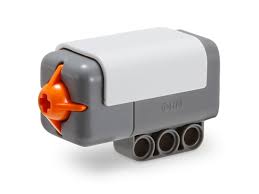Sensing Magnets at Magnetic Measurement and Sensors Event
By Paul Fears | 11 March 2019
Sponsoring Magnetics Society Event at LEGO Denmark
Bunting is sponsoring and exhibiting at a two-day event entitled ‘Magnetic Measurement and Sensors‘ organised by the UK Magnetics Society (21 – 22 March 2019). The conference is being held at LEGO House in Billund, Denmark.
This two-day event will focus on measurements in the field of magnetics. New techniques exploiting the ability to pick up low level signals have been turned into robust sensors and systems and introduced in many different industrial settings performing on-line quality assessment of processes and materials. Secondly, the magnetic materials themselves need to be quality tested using both conventional and new methods. Science in the area keeps on developing, yielding new opportunities for in-sight and products.

Included in the extensive list of speakers are Henning Kirk and Henning Mikkelsen of LEGO who will talk about ‘Magnets and Sensors for Fun – Applied in Advanced LEGO Toy Products’.
Magnets and Sensors
Magnetic position sensing using Hall Effect devices or Anisotropic Magneto Restrictive sensors is a well-established method of contactless positional location of rotational or linearly moving components. Multiple sensors offer very accurate resolution and are used extensively in many electronic and mechanical control systems. Position and rotational sensors can be position inside secondary complex components and utilise a bespoke magnetising fixture, also designed and built by Bunting Magnetics to maximise or set the capabilities of the magnet.
The Bunting design and engineering team work closely with companies manufacturing and using sensors to develop magnetic assemblies with a focus on weight reduction, minimising false triggers, and performance.
A sensing application may range from a simple proximity switch (e.g. reed switch on a door or window security alarm) to encoder technology for motor control in automotive or aerospace applications. The Bunting design team has worked on projects where sensors are required for detecting rotor positions, providing measurements (e.g. distances, speed or angle proximity), detecting fluid levels, and triggering switches. These include magnets used to measure the level of fuel, contactless position sensing magnets, and magnets to sense speed. A sensing application may range from a simple proximity switch (e.g. reed switch on a door or window security alarm) to encoder technology for motor control in automotive or aerospace applications. Understanding the technical requirements of a magnetically contactless solution ensures the best design of Magnetic Assembly.
Different Types of Magnets
Many of the bespoke magnetising fixtures designed and manufactured by the Bunting team utilise a Bunting range of compression or plastic bonded Neodymium called BREMAG and BREMAG10N. Plastic bonded magnets are often used due to their magnetic isotropy and advantage of being able to produce multipole (fine pole) magnetisation patterns for accurate position sensing.
Both the BREMAG and BREMAG10N Magnet materials are manufactured in the UK and offer the highest energy (10, 10.5 and a World Leading 11MGOe) of all types of bonded magnets. With the higher magnetic energy, this type of Neodymium Magnet is ideal for use in brushless DC motors, actuators and sensors.
Bunting also has a range of sintered and bonded neodymium magnets with the direction of magnetism controlled to +/- 0.5 degrees. This range of Magnets has been developed to provide integrators of Magnetostrictive position sensing offer more accurate and more compact systems. When a typically linear position sensing has an accuracy proportionally to the angular error in an axially aligned ring magnet, magnets with a tighter specification significantly improve the performance.
For further information on magnets used in sensors applications, please contact us on
Phone: +44(0)1442 875081
Email: sales.berkhamsted@buntingmagnetics.com
Via the Bunting Europe website for specialist magnets and magnetic assemblies


